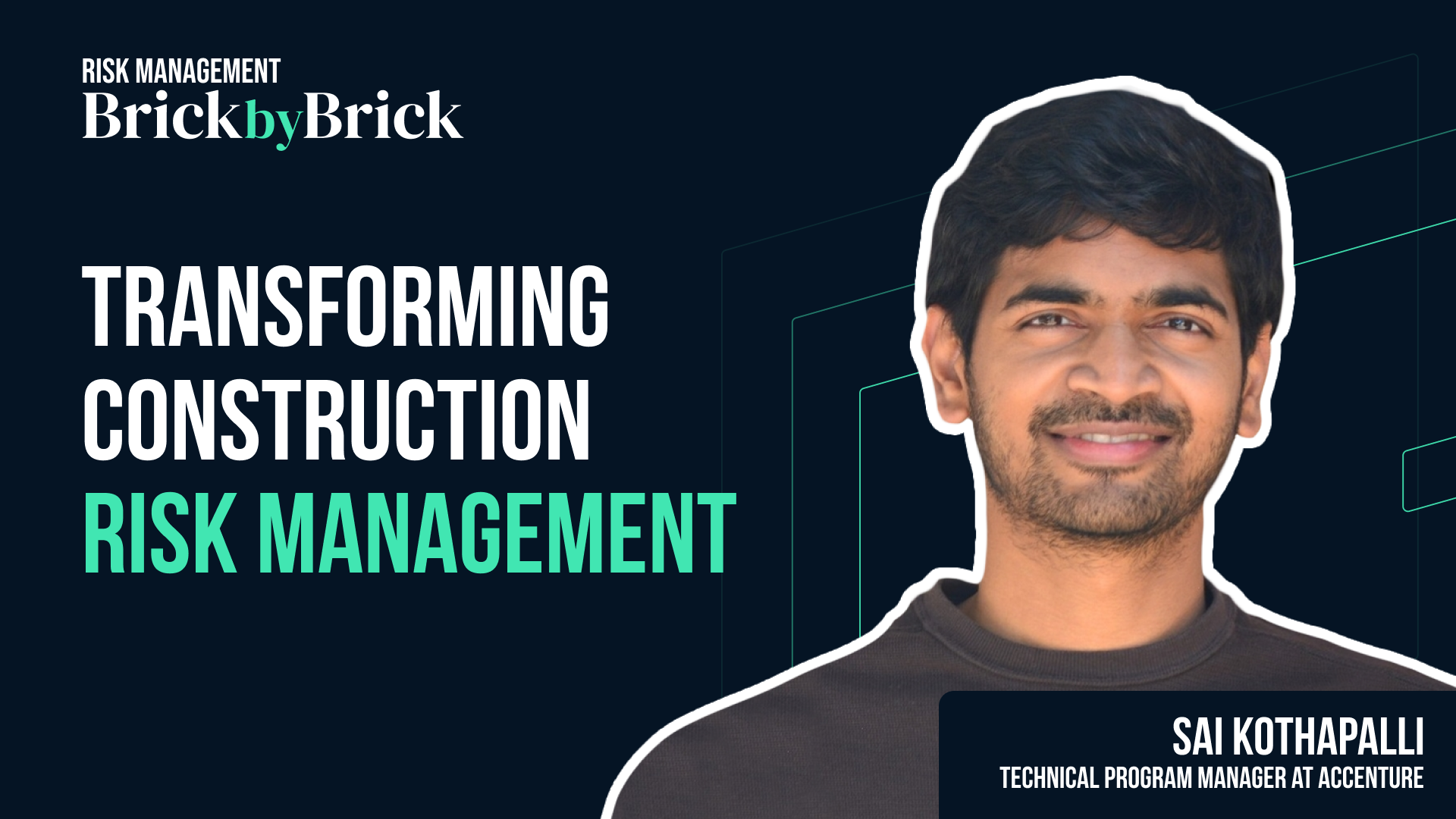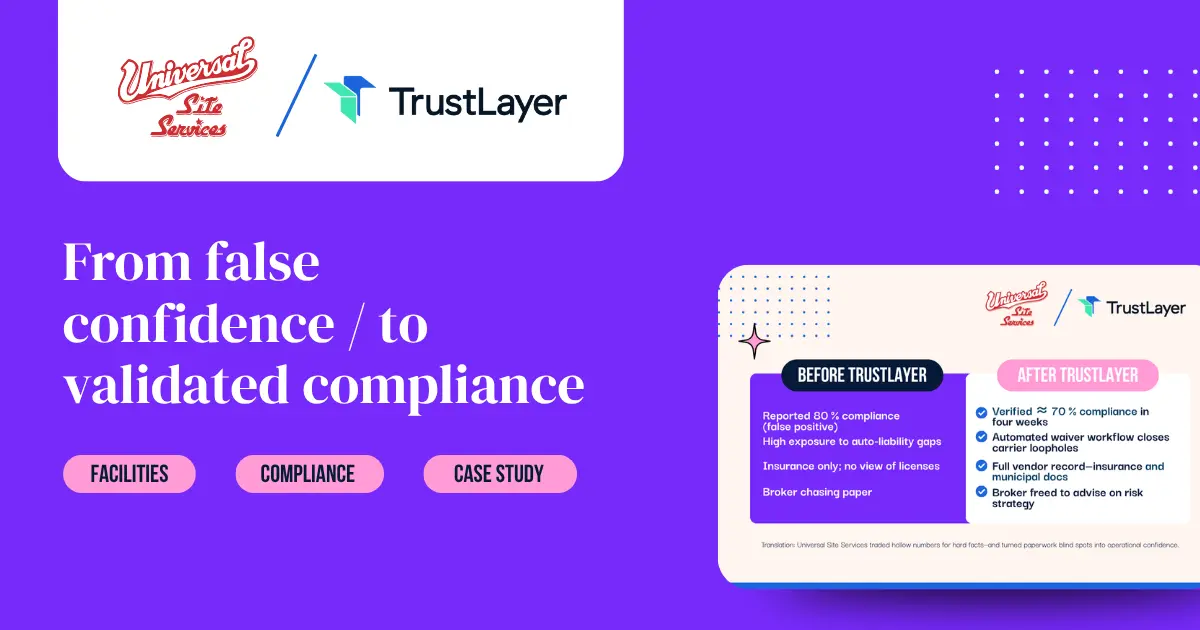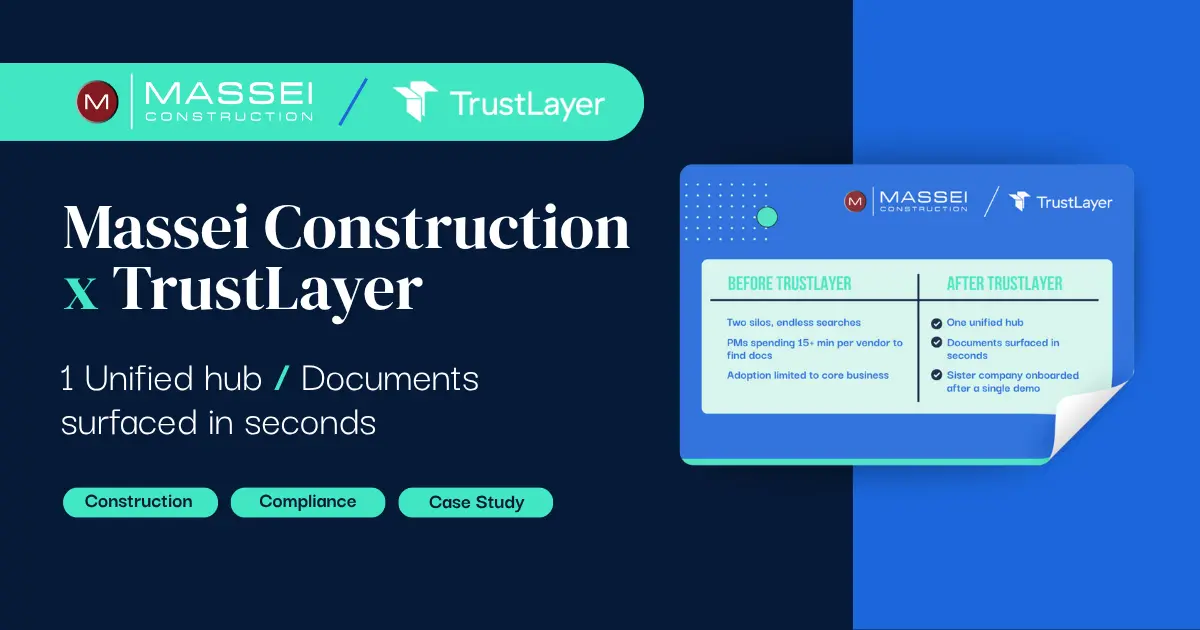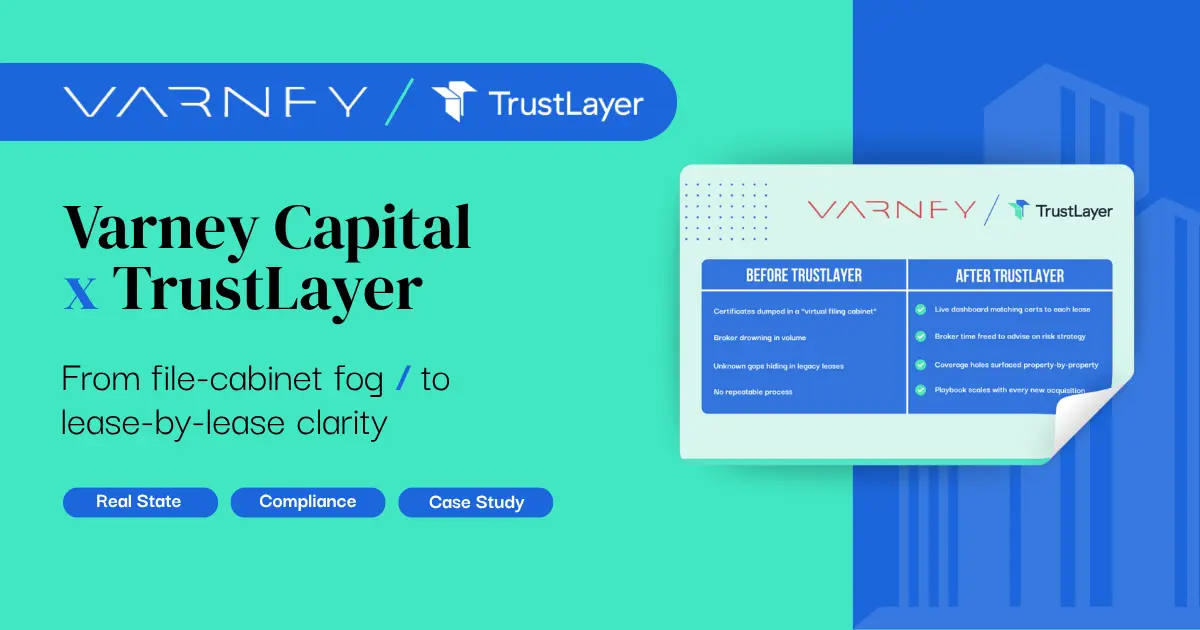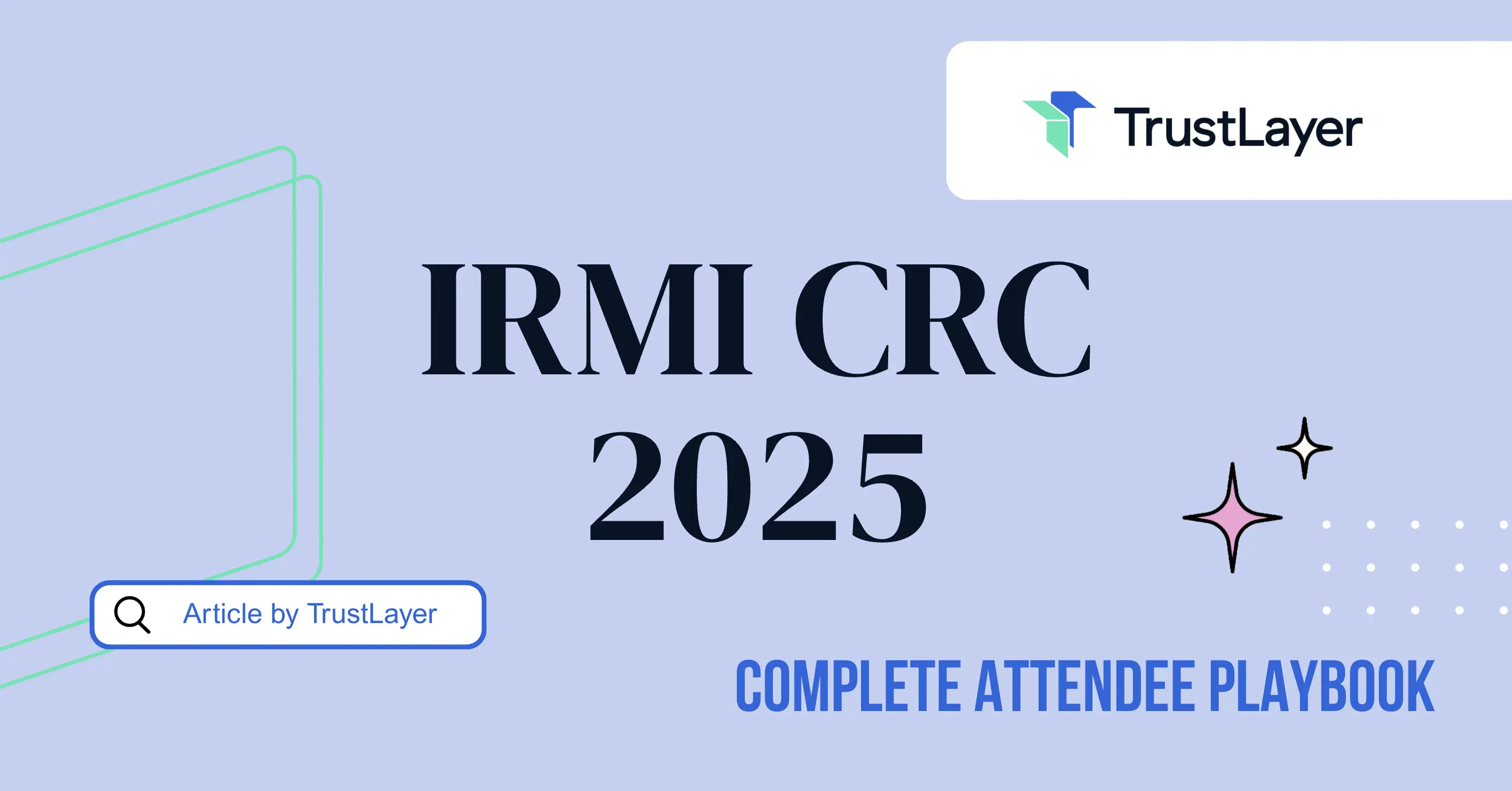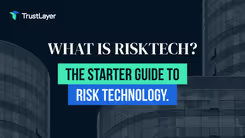 Resources
Resources From Telematics to Satellites: The Future of Infrastructure Risk Management with Reijo Pold
From Telematics to Satellites: The Future of Infrastructure Risk Management with Reijo PoldFrom Telematics to Satellites: The Future of Infrastructure Risk Management with Reijo Pold
.png)
In a recent episode of Risk Management: Brick by Brick, host Jason Reichl sits down with Reijo Pold, Founder and Chief Strategy Officer of ValueSpace, for a groundbreaking conversation about how satellite technology is revolutionizing infrastructure risk management. From detecting structural failures before they become disasters to saving companies millions through predictive analytics, Reijo reveals how the democratization of satellite technology is transforming an industry that has relied too heavily on historical data and reactive approaches.
To find out how TrustLayer manages risk so that people can build the physical world around us, head to TrustLayer.io.
The Telematics Revolution Comes to Infrastructure
Reijo opens with a powerful analogy that reframes how we should think about infrastructure monitoring: "We do a very similar thing, but through the use of satellites. It's like telematics for infrastructure. So we understand if, figuratively speaking, if a light would go on, if an oil light goes on, or an engine light goes on."
Just as your car's dashboard alerts you to engine problems before catastrophic failure, ValueSpace uses satellite data to detect when infrastructure assets are showing signs of distress. The difference? Instead of monitoring one vehicle, they can analyze everything from commercial buildings and railways to highways, mining operations, and dams across vast geographic areas.
This isn't just about replacing boots-on-the-ground inspections—it's about having a constant eye in the sky that can spot problems developing over time and prioritize where human resources should be deployed first.
The Perfect Storm: Aging Assets Meet Climate Change
Here's the sobering reality Reijo presents about our infrastructure crisis: extreme weather events are increasing while much of our critical infrastructure is aging beyond its design limits. "A lot of the infrastructure is getting pretty old. It's decaying all around the world. So when you put those two things together, it essentially inflicts much more pressure on weaker structures."
The numbers are staggering. Rainfall is up 100% in some regions while down 30% in others. These dramatic shifts in moisture regimes are changing soil dynamics and everything built on top—from commercial buildings to critical transportation networks.
Traditional risk models, built on historical data, simply can't account for these unprecedented changes. "That's why the kind of old models or the classical models that insurers and risk engineers have been using are not that accurate anymore," Reijo explains.
The 10X to 100X Cost Advantage of Prevention
When Jason asks about the financial benefits, Reijo drops a game-changing statistic: "In terms of fixing anything before it breaks, it's 10 to 100 times more cost-efficient."
But the real value comes from prioritization. Imagine having a 300-kilometer railway line that needs maintenance. Traditional approaches might require inspecting the entire length at enormous cost. ValueSpace's satellite analytics can pinpoint exactly which sections need immediate attention.
Reijo shares a concrete example: "On a 100-kilometer section, say, we're saving our client $1,700,000 just by using satellite-based analytics." That's not theoretical savings—that's real money being redirected from unnecessary maintenance to critical repairs.
From Defense Secrets to Commercial Reality
The democratization of satellite technology represents one of the most significant shifts in risk management capabilities. "In the nineteen nineties, Earth observation and satellite technology was really reserved for the defense sector and for government level activity," Reijo explains. "What's happened in the last ten years is that access to open source data has become free to use."
This transformation means organizations no longer need classified clearances or massive budgets to access satellite intelligence. Combined with improved analytical tools and growing acceptance from insurance and regulatory industries, satellite-based risk assessment has moved from science fiction to standard business practice.
The speed of analysis is remarkable: "We can do a fifteen million hectare analysis on a waterfront or port development in under four hours. And we can do that at a six-day frequency pre-, during, and post-build."
Moving From Modeling to Facts
Perhaps the most powerful shift ValueSpace enables is moving from theoretical risk models to factual assessment. Instead of estimating what might happen based on historical patterns, organizations can now see exactly what is happening in real-time.
"You can have a snapshot in facts," Reijo explains. When a mining facility's tailing storage walls are moving significantly, satellite data can quantify exactly how much movement has occurred and assess the increased susceptibility to climatic events like extreme rainfall.
This fact-based approach allows risk managers to have concrete conversations about structural issues rather than relying on assumptions or outdated inspection data.
Setting New Global Standards
The impact extends beyond individual organizations. Reijo reveals that ValueSpace is working with the UN to enhance global safety standards through satellite-based analytics. "There's something pretty exciting that we're doing with the UN, looking at how we can enhance safety standards through the use of satellite-borne analytics."
Meanwhile, insurers and brokers are integrating this technology as standard practice. "Brokers are using it as standard in their processes going forward. What I'm seeing is telematics for infrastructure playing out in real time."
The Industry Challenge: Speed of Adoption
Despite the clear benefits, Reijo identifies the biggest challenge facing the industry: "It would be great if some of the processes would move quicker within large companies."
The technology exists, the business case is proven, and early adopters are seeing dramatic results. But organizational change takes time, especially in industries built on traditional risk assessment methods.
Final Thoughts
Reijo's advice for newcomers to the industry is simple but profound: "Plan for the long game. If you really want to make a change, it's not going to happen in two, three months, and prepare for that."
The infrastructure crisis isn't coming—it's here. But so are the tools to address it systematically and cost-effectively. The organizations that will thrive are those that embrace satellite intelligence not as an expensive add-on, but as fundamental infrastructure for managing risk in an era of climate uncertainty.
As Reijo puts it, we're witnessing "telematics for infrastructure playing out in real time." Just as automotive insurers can't imagine operating without vehicle telematics today, infrastructure risk management without satellite intelligence will soon seem equally outdated.
To hear more strategic insights from someone who's spent decades helping companies rethink their approach to risk financing, tune in to this episode of Risk Management: Brick by Brick.
👉 Spotify: https://bit.ly/3KrskLt
👉 Apple Podcasts: https://apple.co/4nuxJ2I
👉 YouTube: https://youtu.be/ZJF_q_54XTs
Podcast Host: Jason Reichl
Executive Producer: Don Halliwell



